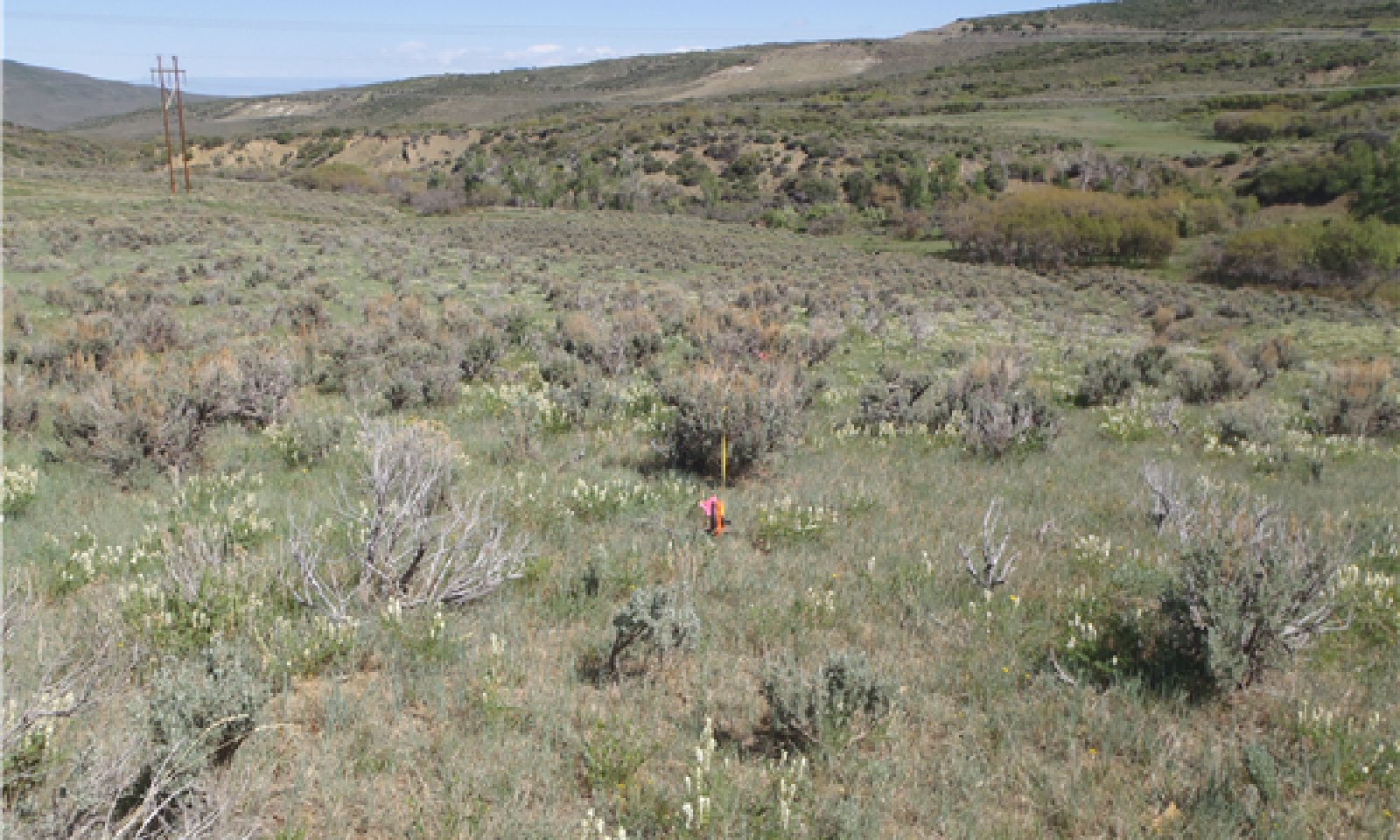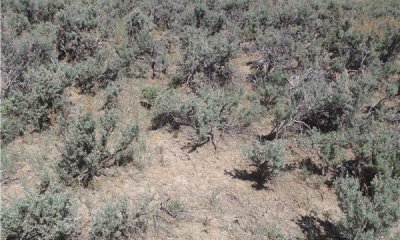
Deep Clay Loam Shale Highlands LRU
Scenario model
Current ecosystem state
Select a state
Management practices/drivers
Select a transition or restoration pathway
- Transition T1A More details
- Transition T1B More details
- Restoration pathway R2A More details
- Transition T2A More details
- Restoration pathway R3A More details
- Transition T3A More details
- Restoration pathway R4B More details
- Restoration pathway R4A More details
-
No transition or restoration pathway between the selected states has been described
Target ecosystem state
Select a state
Description
Dominant view of potential plant community of this ecological site is from grasses and forbs with mountain big sagebrush in the overstory. Western wheatgrass is the principal specie. Muttongrass, Columbia needlegrass, Letterman needlegrass, mountain brome and squirreltail are frequently occurring grasses. Major forbs are silver lupine, milkvetch, wild onion, Indian paintbrush, and yarrow. Mountain big sagebrush is the most conspicuous shrub. Serviceberry, yellow rabbitbrush and snowberry grow in scattered stands. Although this site is commonly bordered by spruce-fir or aspen woodlands, few of these or other trees actually grow on the site. This site favors rhizomatous species like western wheatgrass and yarrow because of the vertic soil properties that occur naturally on this site.
This state represents the closest description and function of the site prior to European settlement. There are two dominant plant community phases in the reference state. Fire and drought are natural disturbances that change the pathways between community phases. Drought is frequent on this site and fires were of mixed intensity and frequency. Mountain big sagebrush sites it has on average 10-50 years FRI. Sagebrush species less than 50 years old are easily killed by fire (Miller and Eddleman, 2001). Most forb species which re-sprout from a caudex, corm, bulb, rhizome or rootstock exhibit rapid recovery following fire and suffrutescent low-growing or mat-forming forbs such as pussytoes or buckwheat can be severely damaged by fire (Miller and Eddleman, 2001).
Submodel
Description
State 2 is a sagebrush dominated community. This state has an increase in shrub cover and a decrease in the understory cover from State 1. The sagebrush community is an even structured single age stand. Also, low shrubs such as yellow rabbitbrush will increase and replace part of the herbaceous component in the understory. This state has lower species diversity than State 1. Improper grazing management practices that lead to decreased deep rooted understory species can lead to compaction in the soil, erosion from lack of plant canopy, decreased organic matter in the soil, and increased soil exposure due to reduction in the litter cover. Sagebrush canopy cover would be >45%.
Submodel
Description
This state is characterized by the fact that sagebrush has been removed due to fire and/or shrub management treatments. Shrub management treatments may include techniques such as chaining, disking, or mowing. The community dynamics are similar to the reference state. This state could persist for long periods of time. Sagebrush will start to re-establish when the conditions are right for it to do so. This site has been historically seeded to perennial species such as smooth brome, intermediate wheatgrass, western wheatgrass, thickspike wheatgrass and Russian wildrye.
Due to changes in the soil properties and seeded plants, this site is not likely to return to the Reference State without active restoration practices.
Submodel
Description
State 4 would be a sagebrush dominated community; This state would have an increase in shrub cover and a decrease in the understory cover. The sagebrush community would be an even structured single age stand. Introduced species would have decreased in this state. Also, low shrubs such as yellow rabbitbrush and spineless horsebrush will increase and replace part of the herbaceous component in the understory. This state has low species diversity. Improper grazing management practices that lead to decreases deep rooted understory.
Submodel
Mechanism
Improper grazing for extended periods during the growing season can reduce the fine fuels of the understory and thus, favor sagebrush encroachment. Lack of fire over time can cause this transition (McIver, et al, 2010). Extended periods of drought, lack of insect and pathogen activity can influence this pathway to create a more single age stand of sagebrush. This transition is characterized by loss of the understory and increased bare ground between the shrubs and/or other evidence of increased soil erosion. Fine fuels depletion due to inappropriate grazing has shifted fire regimes, from relatively frequent and low to mixed severity (10-70 years mean FRI) to more frequent and high severity (>70 years mean FRI).
Mechanism
This transition is human induced through shrub management, prescribed burning and/or reseeding with introduced species after a catastrophic wildfire.
Mechanism
Proper grazing, wet climatic periods, fire after seed set of the understory, and small scale insect and pathogen mortality of shrubs can move this community towards diverse understory and away from the dense single age stand of sagebrush (Evers et al, 2011). Shrub management including herbicides, prescribed burning can be used to mimic the pathways and seeding with natives after treatment.
Mechanism
This transition is human induced through shrub management, prescribed burning and/or reseeding with introduced species after a catastrophic wildfire.
Mechanism
This site could be restored to resemble the reference site of western wheatgrass and mountain big sagebrush community by seeding mixtures of commercially available native grasses, forbs, and shrubs. Selective remove of introduced species might be needed also, to restore this site. With proper management, over time this site can be come close to the diversity and complexity of the reference state. This can be an intensive option on a large scale.
Mechanism
Improper grazing for extended time frames and lack of fire are the main pathways. Extended drought can influence the production of the understory and combine with improper grazing can reduced this state back to a mature/single age shrub community with a few introduced seeded understory species found mostly under the canopy of the shrubs.
Mechanism
This site could be restored to resemble the reference site of Western Wheatgrass and Mountain big sagebrush community by seeding mixtures of commercially available native grasses, forbs, and shrubs. Selective remove of introduced species might be needed also, to restore this site. With proper management, over time this site can be come close to the diversity and complexity of the reference state. This can be an intensive option on a large scale.
Mechanism
Fire and wetter climatic periods can cause the mature/single age shrub communities to go back to a grassland state if proper grazing strategies are implemented. This will only happen if enough seed is in the seed bank to regenerate the understory species. If the seed or mature plants are not available for this pathway then the site may need to be re-seeded. Shrub management practices such as prescribed burning, prescribed grazing and seeding could be used to assist in moving this state 4 to state 3.
Model keys
Briefcase
Add ecological sites and Major Land Resource Areas to your briefcase by clicking on the briefcase (![]() ) icon wherever it occurs. Drag and drop items to reorder. Cookies are used to store briefcase items between browsing sessions. Because of this, the number of items that can be added to your briefcase is limited, and briefcase items added on one device and browser cannot be accessed from another device or browser. Users who do not wish to place cookies on their devices should not use the briefcase tool. Briefcase cookies serve no other purpose than described here and are deleted whenever browsing history is cleared.
) icon wherever it occurs. Drag and drop items to reorder. Cookies are used to store briefcase items between browsing sessions. Because of this, the number of items that can be added to your briefcase is limited, and briefcase items added on one device and browser cannot be accessed from another device or browser. Users who do not wish to place cookies on their devices should not use the briefcase tool. Briefcase cookies serve no other purpose than described here and are deleted whenever browsing history is cleared.
Ecological sites
Major Land Resource Areas
The Ecosystem Dynamics Interpretive Tool is an information system framework developed by the USDA-ARS Jornada Experimental Range, USDA Natural Resources Conservation Service, and New Mexico State University.






